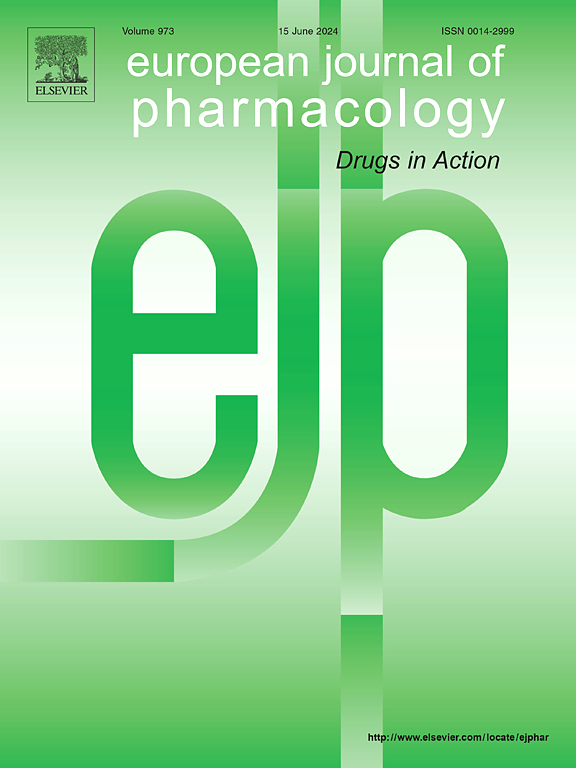FKBP5 mediates glucocorticoid signaling in estrogen deficiency-associated endothelial dysfunction
IF 4.2
3区 医学
Q1 PHARMACOLOGY & PHARMACY
引用次数: 0
Abstract
Background
Cardiovascular disease (CVD) is the leading cause of mortality among postmenopausal women, with atherosclerosis being a major underlying factor. Endothelial dysfunction, a key initiating event in atherosclerosis, can be triggered by hormonal and metabolic changes. While estrogen deficiency has been linked to increased cardiovascular risk, the molecular mechanisms by which it exacerbates endothelial dysfunction, particularly in the presence of elevated glucocorticoid levels, remain poorly understood. This study aims to explore the role of FK506-binding protein 5 (FKBP5) in mediating glucocorticoid-induced endothelial dysfunction in estrogen-deficient females.
Methods
Estrogen deficiency was developed in female mice by ovariectomy (OVX). Female mice and human umbilical vein endothelial cells (HUVECs) were treated with dexamethasone (DEX) to mimic elevated cortisol levels in vivo and vitro. Endothelial function of the mice aorta was assessed using wire myography. Oxidative stress and inflammation were evaluated through reactive oxygen species (ROS) detection, immunofluorescence and mRNA expression analysis. The selective FKBP5 inhibitor SAFit2 was used to study the functional role of FKBP5 in these processes.
Results
Estrogen deficiency contributed to endothelial dysfunction in female mice, an effect exacerbated by elevated glucocorticoid levels. FKBP5 expression was upregulated in both ovariectomized mice aortas and DEX-treated endothelial cells. Inhibition of FKBP5 reversed endothelial dysfunction, reduced ROS levels, and suppressed the expression of pro-inflammatory mediators, including ICAM-1, IL-1β, TNF-α, and NF-κB.
Conclusion
FKBP5 mediates glucocorticoid-induced endothelial dysfunction under estrogen-deficient conditions. Inhibition of FKBP5 represents a promising therapeutic strategy to ameliorate endothelial dysfunction and improve vascular health in estrogen-deficient women.

求助全文
约1分钟内获得全文
求助全文
来源期刊
CiteScore
9.00
自引率
0.00%
发文量
572
审稿时长
34 days
期刊介绍:
The European Journal of Pharmacology publishes research papers covering all aspects of experimental pharmacology with focus on the mechanism of action of structurally identified compounds affecting biological systems.
The scope includes:
Behavioural pharmacology
Neuropharmacology and analgesia
Cardiovascular pharmacology
Pulmonary, gastrointestinal and urogenital pharmacology
Endocrine pharmacology
Immunopharmacology and inflammation
Molecular and cellular pharmacology
Regenerative pharmacology
Biologicals and biotherapeutics
Translational pharmacology
Nutriceutical pharmacology.

 求助内容:
求助内容: 应助结果提醒方式:
应助结果提醒方式:


